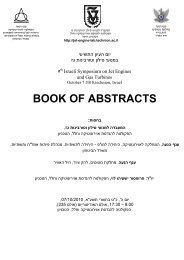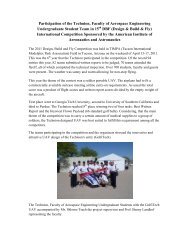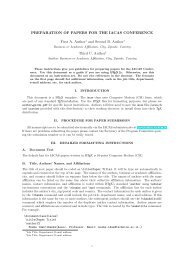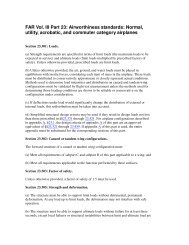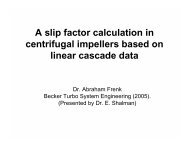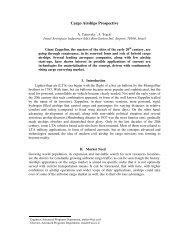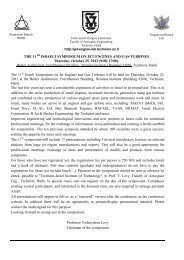A Century of Ramjet Propulsion Technology Evolution - Faculty of ...
A Century of Ramjet Propulsion Technology Evolution - Faculty of ...
A Century of Ramjet Propulsion Technology Evolution - Faculty of ...
You also want an ePaper? Increase the reach of your titles
YUMPU automatically turns print PDFs into web optimized ePapers that Google loves.
Germany, Italy, and Spain (the Eur<strong>of</strong>ighter nations), France, and<br />
possibly Sweden. BVRAAM is designed to provide performance,<br />
particularly kinematic performance, several times that <strong>of</strong> existing<br />
MRAAMs.<br />
There is no active radar guided AAM in service with the Royal<br />
Air Force. Sky Flash is a semi-active missile and requires the launch<br />
aircraft to illuminate the target throughout the time <strong>of</strong> flight <strong>of</strong> the<br />
missile, which makes it vulnerable to counterattack. BVRAAM will<br />
give Eur<strong>of</strong>ighter the capability to engage multiple targets simultaneously,<br />
independent <strong>of</strong> parent aircraft maneuver, at greater range<br />
than AMRAAM and in all weathers, day or night. Following launch<br />
and in-flight target update, BVRAAM’s active radar seeker takes<br />
control and autonomously searches for and locks onto the target.<br />
Conventional rocket motor powered missiles rely on an initial<br />
boost phase to achieve the high speed required, followed by a coast<br />
phase to intercept the target. Latest generation, highly maneuverable<br />
aircraft are able to outrun conventional missiles at the extremes<br />
<strong>of</strong> their range. The VFDR airbreathing motor proposed for Meteor<br />
provides sustained power, following the initial boost, to chase and<br />
destroy the target. The missile’s computer and the seeker, which provides<br />
the missile’s ability to search, locate, and lock onto a target,<br />
will build on existing French technology, used in the Mica missile,<br />
to provide robust performance in the presence <strong>of</strong> electronic countermeasures.<br />
The BVRAAM/Meteor missile design, <strong>of</strong>fered by Matra BAE<br />
Dynamics and its consortium, was selected in May 2000 as most<br />
likely to meet U.K. needs over the life <strong>of</strong> the Eur<strong>of</strong>ighter aircraft,<br />
beating out the Raytheon Systems, Ltd., led consortium.<br />
PDE development activities in the United States have been pursued<br />
since the early 1990s. PDE missile system cost is predicted to<br />
be 30% <strong>of</strong> turbojet cost for a Mach 2.5 configuration with excellent<br />
fuel efficiency at high speed and to represent a potential 50% range<br />
increase at Mach 4. The PDE pro<strong>of</strong> <strong>of</strong> concept was demonstrated<br />
in single-pulse tests in the early 1990s. Flight-scale multiple-cycle<br />
tests with multiple combustors and a rotary valve were tested in the<br />
late 1990s. Ongoing efforts are proceeding into subsequent development<br />
phases.<br />
<strong>Ramjet</strong> Development: 2000–Today<br />
This era witnesses the continuation <strong>of</strong> international efforts to push<br />
the edge <strong>of</strong> the high-speed performance envelope. Table 4 also summarizes<br />
ramjet evolution in the era from 2000 to today and provides<br />
originating country, engine/vehicle names, development dates, performance,<br />
physical characteristics, and state <strong>of</strong> development. Countries<br />
engaged in ramjet development expanded significantly to include<br />
Japan, India, Sweden, Israel, and South Africa during this era.<br />
Scramjet development activities in this era were generally focused<br />
in the United States, Russia, Germany, Japan, and Australia.<br />
The U.S. Navy has supported SFRJ development activities for<br />
many years with the purpose <strong>of</strong> advancing the technology state <strong>of</strong><br />
the art. Such activities gained continued support in 2000 for continued<br />
development for a long-range, reduced-cost Mach 5–6 air- and<br />
surface-launched missile design.<br />
FRY 49<br />
Fig. 31 U.S. SSST flight-tested missile (2002–today).<br />
The People’s Republic <strong>of</strong> China has displayed a model at several<br />
air shows <strong>of</strong> a ramjet-powered air-launched missile similar in configuration<br />
to the French ASMP missile. The designation Ying-Ji 12<br />
suggests an antiship role similar to the French ANF missile.<br />
Following the cancellation <strong>of</strong> the SLAT in 1991, the U.S. Navy<br />
had to continue the quest for a replacement for the aging Vandal targets<br />
in the role <strong>of</strong> antiship cruise missile threat simulator. In the late<br />
1990s, the Navy evaluated the MA-31/AS-17 as an interim target.<br />
However, the MA-31 was not selected for large-scale production,<br />
and a new SSST missile (Fig. 31) was procured instead. Development<br />
began in 2000 on the GQM-163A Coyote nonrecoverable<br />
vehicle. The SSST is ground launched with a tandem Mk-70 solid<br />
propellant booster and uses an Aerojet (formerly Atlantic Research<br />
Corporation) MARC-R-282 VFDR ramjet sustainer that can reach<br />
speeds up to Mach 2.5 at sea level. Development testing was ongoing<br />
in 2003 with the vehicle successfully flighttested. Current plans<br />
call for production <strong>of</strong> six flight-test vehicles. If the tests are successful,<br />
up to 90 production targets may be ordered with an initial<br />
operational capability planned for mid-2004. 60<br />
The U.S. Navy initiated generic supersonic cruise missile<br />
(GSSCM) in 2002 as advanced cruise missile development for potential<br />
use in high-speed Tomahawk, high-speed strike or antiradiation<br />
applications. Low-drag LFIRR engine technology was proposed<br />
for the Mach 4–5 air- and surface-launched missile.<br />
The U.S. Navy is presently developing a propulsion system that<br />
will enhance the capabilities <strong>of</strong> an evolving antiradiation missile<br />
(ARM) system. The U.S. Navy initiated a four-year HSAD Project<br />
in late 2002 to address time-critical target requirements. The HSAD<br />
Project is directed toward increasing the range and average velocity<br />
<strong>of</strong> an advanced version <strong>of</strong> the HARM system, the higher speed ARM<br />
system. Based on the results <strong>of</strong> industry and government conceptual<br />
propulsion studies and a DOD ARM roadmap, the United States<br />
selected an IRR, VFDR propulsion system with tail-controlled steering.<br />
Three modified HARMs are to be built for captive carry and two<br />
air-launches from an F/A-18C/D in a technology demonstration. A<br />
formal three-year development program could start in 2006. 47,61<br />
Scramjet Development 1955–Today<br />
Scramjet Development: 1955–1990<br />
This era witnessed the beginning <strong>of</strong> scramjet development, with<br />
early combustion testing <strong>of</strong> ejector ramjets being initiated in the late<br />
1950s. Table 5 summarizes scramjet evolution in the era from 1955<br />
to 1990 and provides originating country, engine/vehicle names,<br />
development dates, performance, physical characteristics, and state<br />
<strong>of</strong> development. Significant developments in rocket boost and airbreathing<br />
propulsion systems that have occurred from midcentury<br />
onward greatly influenced the debate over hypersonic vehicle options<br />
and missions. The turbojet first flew in 1939, the ramjet in 1940,<br />
the high-performance large liquid-fueled rocket engine in 1943, and<br />
the practical man-rated reusable throttleable rocket engine in 1960.<br />
These dates serve as general milestones for numerous other developments,<br />
including supersonic afterburning turbojets, turboramjets,<br />
rocket- and turbine-based combined cycle engines, and scramjets.






